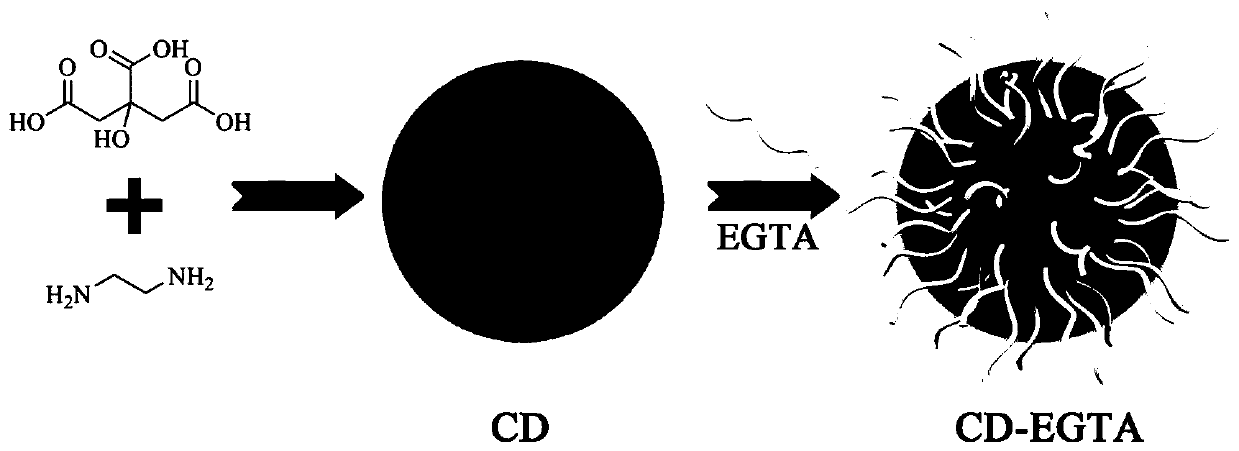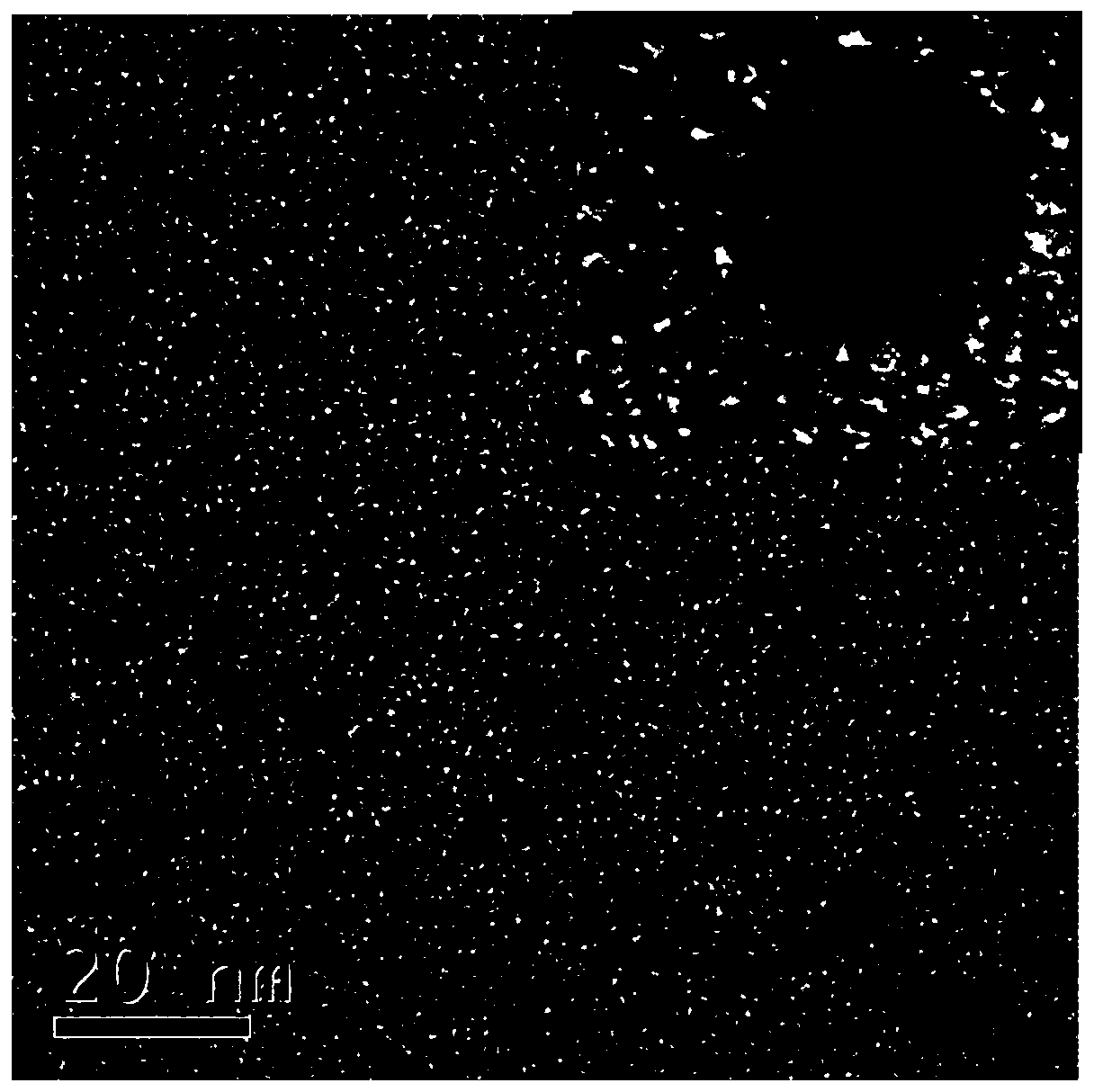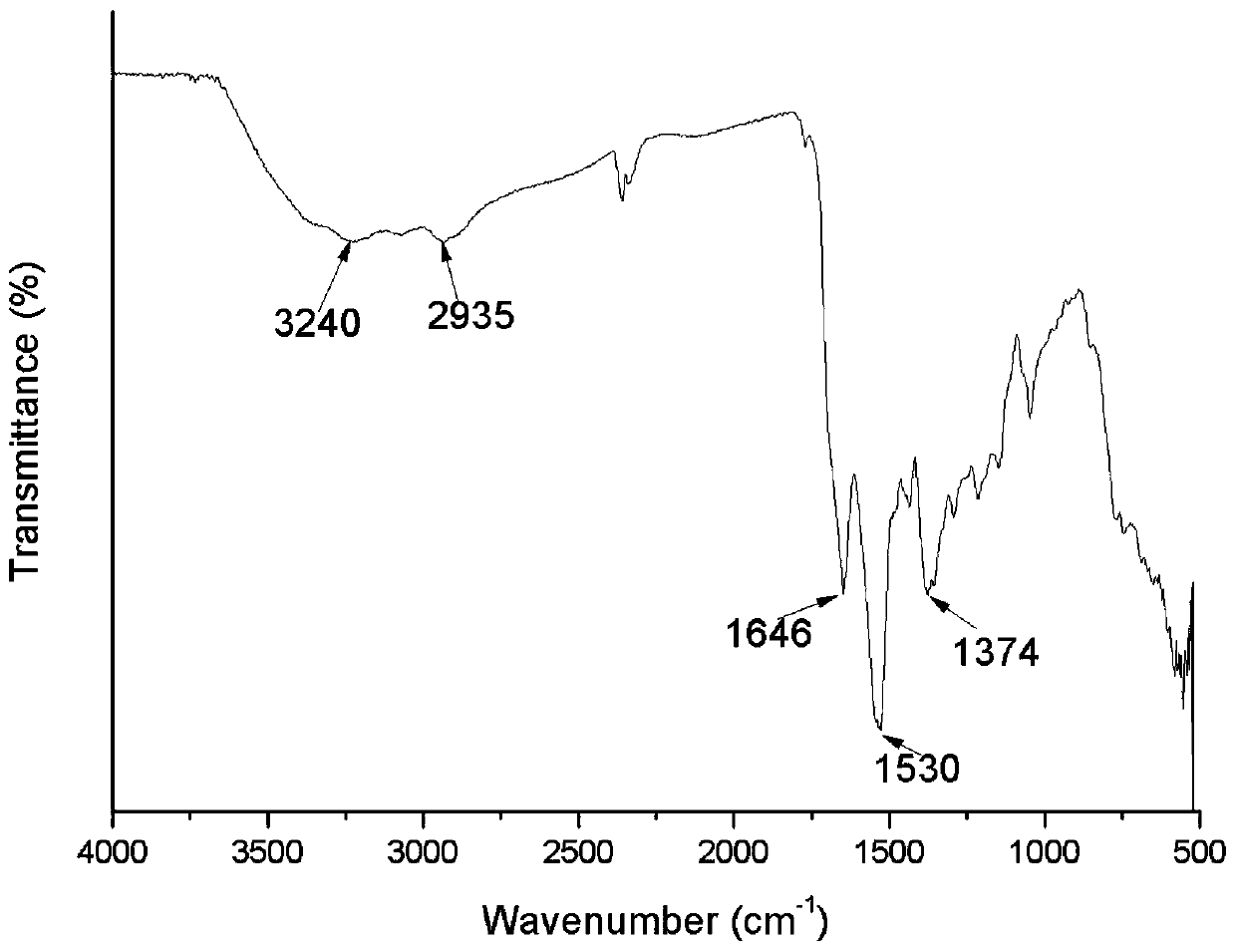Carbon dot fluorescent probe for calcium ion detection, and preparation method thereof
A technology of carbon dot fluorescence and calcium ions, which is applied in the direction of fluorescence/phosphorescence, chemical instruments and methods, measuring devices, etc., can solve the problem of undisclosed reliable technical solutions for calcium ion detection, and achieve cheap raw materials, simple and safe preparation process Effect
- Summary
- Abstract
- Description
- Claims
- Application Information
AI Technical Summary
Problems solved by technology
Method used
Image
Examples
Embodiment 1
[0025] A carbon-dot fluorescent probe for calcium ion detection comprises carbon dots and ethylene glycol bis(2-aminoethyl ether)tetraacetic acid (EGTA) modified on the carbon dots. The carbon dot fluorescent probe prepared by modifying (EGTA) on the carbon dots in the present invention can be used for calcium ion detection.
Embodiment 2
[0027] A preparation method for a carbon dot fluorescent probe for calcium ion detection, comprising the following steps:
[0028] 1) Prepare carbon dots;
[0029] 2) Add ethylene glycol bis(2-aminoethyl ether) tetraacetic acid to the prepared carbon dots to obtain carbon dots modified with ethylene glycol bis(2-aminoethyl ether) tetraacetic acid, which is the Carbon dot fluorescent probe for calcium ion detection.
[0030] In a preferred embodiment, refer to figure 1 , the specific methods include:
[0031] 1) Preparation of carbon dots: Weigh 1.5g of citric acid, dissolve in 40mL of deionized water, stir well to dissolve completely, add 1mL of ethylenediamine with a pipette gun; after stirring well, transfer the solution into 80mL of polytetrafluoroethylene lining The reaction kettle with the bottom was reacted at 180°C for 8 hours to obtain carbon dots;
[0032] 2) Modification of EGTA: Add 1 g of ethylene glycol bis(2-aminoethyl ether) tetraacetic acid to the reactor, ...
Embodiment 3
[0034] Perform performance test on the carbon dots modified by EGTA:
[0035] refer to figure 2 , is a transmission electron microscope image of EGTA-modified carbon dots. It can be seen from the figure that the size of each carbon dot is about 4-5nm, and the particle size is uniform and the dispersion is good. From high-resolution transmission electron microscope photos ( figure 2 It can be seen that the carbon dots have an obvious lattice structure.
[0036] refer to image 3 , is the infrared spectrum of the carbon dot modified by EGTA. It can be seen from the figure that the carbon dot is at 3240cm -1 , 2935cm -1 , 1646cm -1 , 1530cm -1 and 1374cm -1 There is an absorption peak at 3240cm -1 Represents the stretching vibration of -OH, 2935cm -1 Represents the stretching vibration of C-H, 1646cm -1 Represents the vibration of -CO-NH, 1530cm -1 and 1374cm -1 They are the stretching vibrations of N-H and C=O, respectively.
[0037] refer to Figure 4 , is the ...
PUM
 Login to View More
Login to View More Abstract
Description
Claims
Application Information
 Login to View More
Login to View More - R&D
- Intellectual Property
- Life Sciences
- Materials
- Tech Scout
- Unparalleled Data Quality
- Higher Quality Content
- 60% Fewer Hallucinations
Browse by: Latest US Patents, China's latest patents, Technical Efficacy Thesaurus, Application Domain, Technology Topic, Popular Technical Reports.
© 2025 PatSnap. All rights reserved.Legal|Privacy policy|Modern Slavery Act Transparency Statement|Sitemap|About US| Contact US: help@patsnap.com



